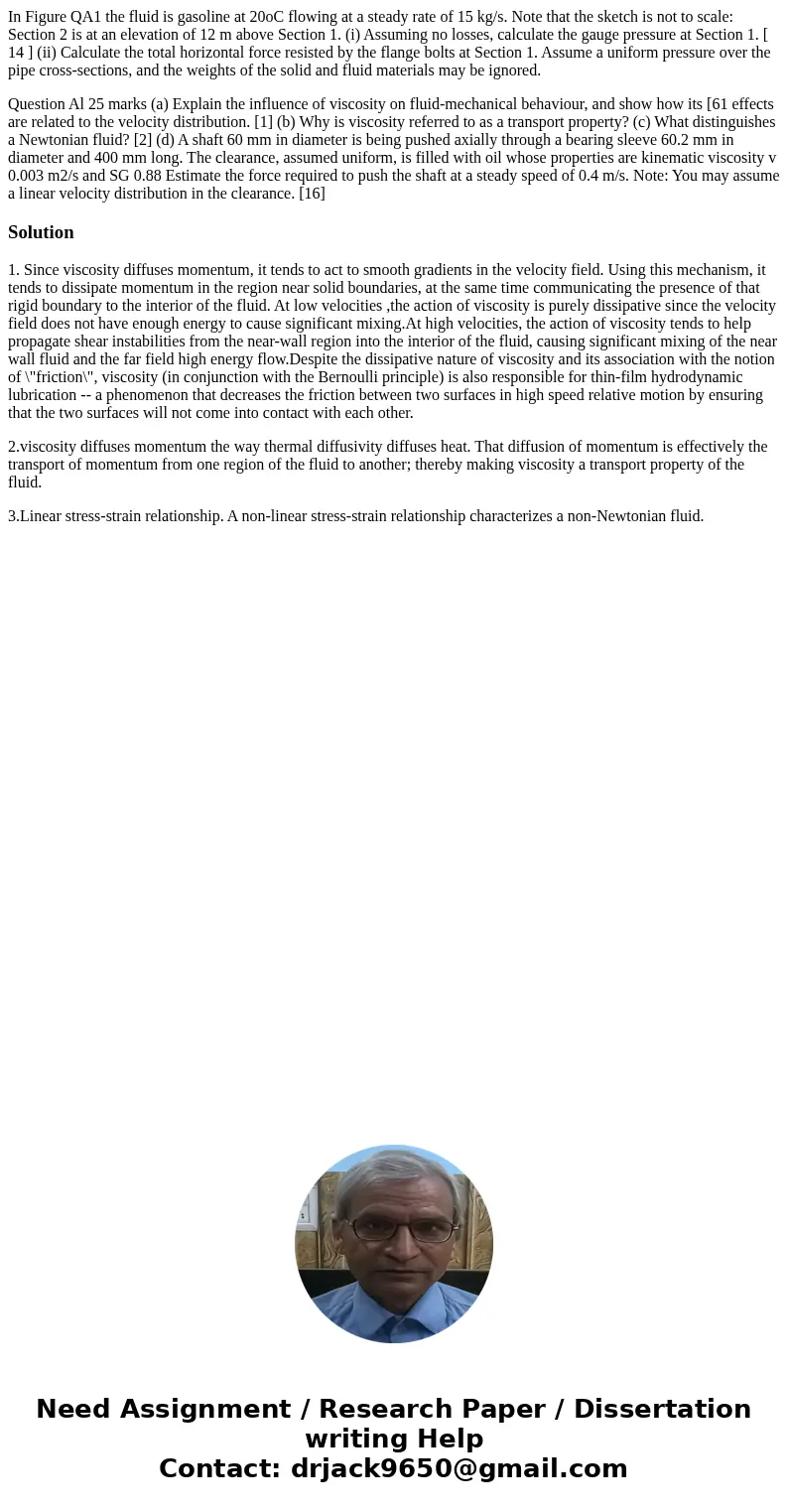In Figure QA1 the fluid is gasoline at 20oC flowing at a ste
In Figure QA1 the fluid is gasoline at 20oC flowing at a steady rate of 15 kg/s. Note that the sketch is not to scale: Section 2 is at an elevation of 12 m above Section 1. (i) Assuming no losses, calculate the gauge pressure at Section 1. [ 14 ] (ii) Calculate the total horizontal force resisted by the flange bolts at Section 1. Assume a uniform pressure over the pipe cross-sections, and the weights of the solid and fluid materials may be ignored.
Question Al 25 marks (a) Explain the influence of viscosity on fluid-mechanical behaviour, and show how its [61 effects are related to the velocity distribution. [1] (b) Why is viscosity referred to as a transport property? (c) What distinguishes a Newtonian fluid? [2] (d) A shaft 60 mm in diameter is being pushed axially through a bearing sleeve 60.2 mm in diameter and 400 mm long. The clearance, assumed uniform, is filled with oil whose properties are kinematic viscosity v 0.003 m2/s and SG 0.88 Estimate the force required to push the shaft at a steady speed of 0.4 m/s. Note: You may assume a linear velocity distribution in the clearance. [16]Solution
1. Since viscosity diffuses momentum, it tends to act to smooth gradients in the velocity field. Using this mechanism, it tends to dissipate momentum in the region near solid boundaries, at the same time communicating the presence of that rigid boundary to the interior of the fluid. At low velocities ,the action of viscosity is purely dissipative since the velocity field does not have enough energy to cause significant mixing.At high velocities, the action of viscosity tends to help propagate shear instabilities from the near-wall region into the interior of the fluid, causing significant mixing of the near wall fluid and the far field high energy flow.Despite the dissipative nature of viscosity and its association with the notion of \"friction\", viscosity (in conjunction with the Bernoulli principle) is also responsible for thin-film hydrodynamic lubrication -- a phenomenon that decreases the friction between two surfaces in high speed relative motion by ensuring that the two surfaces will not come into contact with each other.
2.viscosity diffuses momentum the way thermal diffusivity diffuses heat. That diffusion of momentum is effectively the transport of momentum from one region of the fluid to another; thereby making viscosity a transport property of the fluid.
3.Linear stress-strain relationship. A non-linear stress-strain relationship characterizes a non-Newtonian fluid.

 Homework Sourse
Homework Sourse